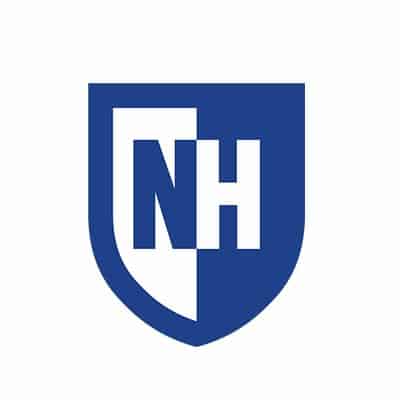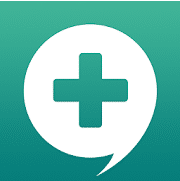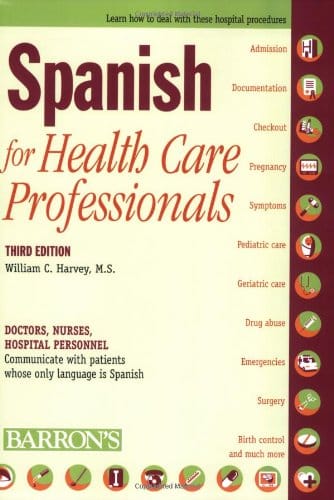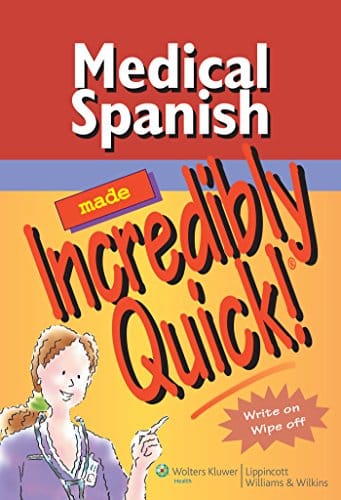Contents
- 1. medicalspanish.com
- 2. Spanish for Medical Professionals I
- 3. Medical Spanish (Lengalia)
- 4. Spanish for Medical Professionals (University of New Hampshire)
- 5. Spanish for Successful Communication in Healthcare Settings (Rice University)
- 6. Care to Translate
- 7. Practicing Spanish
- 8. “Spanish in the Medical Field” by Smithville Public Library
- 9. Language Tailor Medical Spanish
- 10. “Spanish for Health Care Professionals”
- 11. “Medical Spanish Made Incredibly Quick!”
- Why Learn Medical Spanish, Anyway?
- How to Practice Medical Spanish
- And One More Thing…
11 Best Resources to Learn Medical Spanish
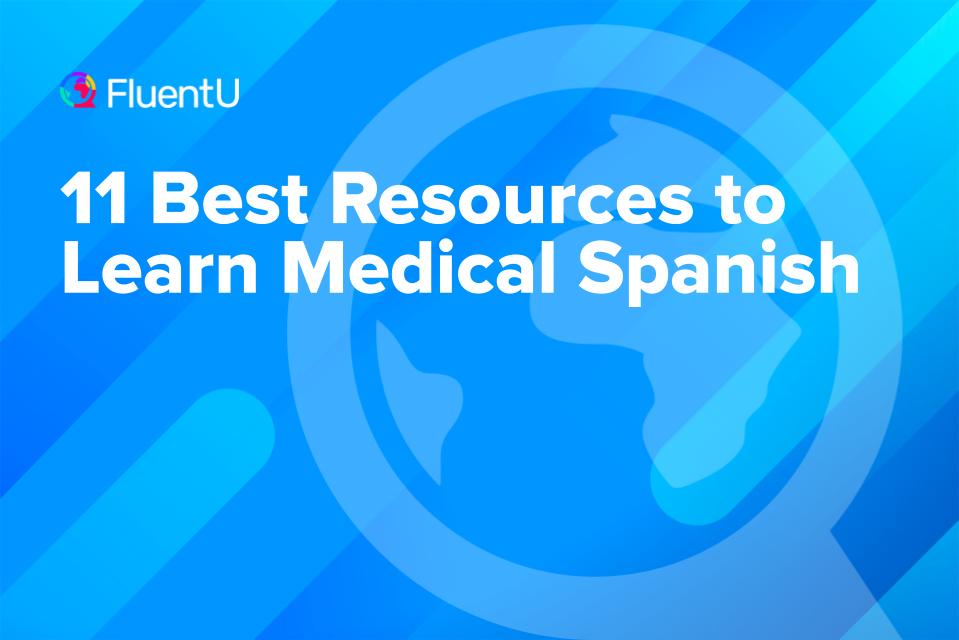
A patient is in pain and needs your help, but you cannot understand what they are saying—what do you do? The Spanish-speaking population is on the rise, and having at least a basic understanding of medical Spanish can help you better help others.
The good news is that there are plenty of top-notch Spanish learning resources created with medical professionals in mind. The following resources will teach you essential medical vocabulary and phrases, bedside manner and other Spanish you will find useful in your field of work
Download: This blog post is available as a convenient and portable PDF that you can take anywhere. Click here to get a copy. (Download)
1. medicalspanish.com
Media: Online course
The well-curated site medicalspanish.com offers specialized courses for various medical professionals including physicians and practitioners, hospital nurses, office nurses, medical assistants, emergency responders, physical therapists, occupational therapists and medical receptionists.
Choose the course that is most relevant to what you need on a daily basis. This way, you will learn the types of vocabulary and phrases necessary for your specific career field.
Courses are entirely online and self-paced, so you can easily fit them into your busy schedule. They feature key words and phrases—no grammar learning necessary. Each section comes with its own notes that you can print out for further practice.
Prices for the courses start at $69 for six months of access and include a certificate of completion. Six months should be enough, as the course is estimated to take about 25 hours.
If you do not want to commit to a course, you might still want to check out some of their free learning resources.
2. Spanish for Medical Professionals I
Media: Online course
This course on ed2go course requires a total of 24 hours of coursework over six weeks. There is a new start date every month, so you will have plenty of opportunities to jump on board.
It is designed for students with no previous Spanish experience and focuses on “survival” Spanish for the medical profession—common phrases you will need in order to ask about symptoms, insurance, etc. You will also learn some basic Spanish, like colors, directions, numbers, verb conjugation and more.
The first course costs $149 by itself. Those who are more serious about medical Spanish can take the full Medical Spanish Series, which includes both the first and second course.
If your Spanish is already pretty good, you may want to consider jumping right to the second course, which gets into specialist categories like mental health, oncology, dentistry and more.
3. Medical Spanish (Lengalia)
Media: Online course

However, bear in mind the course has been designed for students who have at least a B1 level of Spanish, so if your level is lower, this course will be very challenging for you.
With five lessons and one final test, this course will teach you lots of vocabulary and expressions that are used specifically in medical and hospital environments.
Each lesson is divided into several sections. First, there is a series of dialogues with native (Castilian) audio that let learners get familiar with the topic and have a look at the lesson’s vocabulary.
After that, there is a specialized reading (called “supplement”), dialogue/reading-comprehension exercises, listening comprehension activities, videos with exercises and a vocabulary list.
The different vocabulary lists can be studied and reviewed in the form of flashcards, which can be downloaded for free when you purchase the course.
4. Spanish for Medical Professionals (University of New Hampshire)
Media: Online course
This course offered by the University of New Hampshire is perfect for any person with no prior knowledge of Spanish.
It starts with simple topics such as Spanish pronunciation, the colors and the family, and it teaches you Spanish vocabulary and grammar while slowly introducing medical terminology on topics that range from the body to medical tests to pregnancy.
The course tackles the topic of Latin American families (lesson 2), which will be helpful to understand the cultural component of your patients.
There are two versions of this course, both at $139.
One version has specific start dates and includes the help of an instructor. The other version does not have an instructor, but the course can be done whenever you want.
5. Spanish for Successful Communication in Healthcare Settings (Rice University)
Media: Online course

It is divided into four modules with four lessons each.
Each module covers a step in the doctor-patient journey, from the preliminary interview to the physical examination to the final diagnosis and treatment.
The last module is focused on communication difficulties that may arise between a doctor and their patient.
The course is completely in Spanish, so it is recommended for intermediate or advanced students.
You can buy a certificate of completion after you pass all the quizzes and finish the course, but the course is otherwise completely free.
Technology is getting better and better, and nowadays we are able to learn practically anything on the go thanks to smartphones and, specifically, apps.
Learning languages with apps has become very popular, but are healthcare and medical Spanish included in them?
There are some very popular language learning apps that include some lessons on health in general, the parts of the body and diseases, though there is little more to be found on popular apps pertaining to the medical field.
Duolingo, for example, includes some health and hospital lessons, but they are so short and so far down the lesson tree that they are not really worth it as a medical resource.
The same happens with Rosetta Stone. This is not an app designed to teach you medical Spanish, so apart from the odd body part or common illness, you will not find much there (although Rosetta Stone Enterprise includes a healthcare course in Spanish, this is not a course intended for individuals).
To learn medical Spanish with an app, the best option is to go for one that has been specifically designed for that purpose.
These apps might be difficult to find, but some of them are real masterpieces.
To help you get started, I have selected three I personally know and enjoy.
6. Care to Translate
Media: App
Care to Translate is a fantastic app for healthcare professionals and patients, and since it is a medical translator, you can even use it if you still do not know a lot of Spanish.
First, choose if you are a patient or a healthcare professional. Then choose a gender, the source and the target language, and you are ready to go.
You will get free access to over 500 words and full sentences translated and spoken by native speakers on medical topics such as symptoms, physical examination, the body, surgery and even childbirth, just to name a few.
All the questions have been formed in a way that the other person only has to answer “yes” or “no” or use their body language (for instance, there are some questions that need the patient to show a number, which can be done with their fingers).
You can also use the search bar at the bottom of the screen to look for any medical word in both the source and target languages.
If you decide to go premium, you get a seven-day free trial and unlimited access to all 1,500+ medical terms and expressions.
7. Practicing Spanish
Media: Free website
This free website offers a wide variety of useful resources for anyone in a medical profession.
Practicing Spanish offers lessons on basic Spanish like travel vocab, in addition to more specialized topics like anatomy. It even has a collection of folk songs and cultural information, if you want to learn a bit more about the Spanish language than simply the medical aspect of it.
Best of all, Practicing Spanish has lessons organized by profession so that anyone working in a medical field can learn words and phrases that will be immediately useful for them. There are lessons for receptionists, aides, nurses, EMTs, 911 operators and specific specialty areas. Each lesson comes with both audio and text.
Finally, the website offers a featured medical dialogue each month to help you practice key words and phrases in context. There is also an archive of old dialogues, which you can browse by medical condition for some hyper-specific studying.
8. “Spanish in the Medical Field” by Smithville Public Library
Media: Video
This helpful YouTube video provided by a library in Texas offers lessons on basic Spanish, body parts, patient complaints and medical scenarios.
The information appears both in print and in audio, so it is great for anyone looking to learn basic medical Spanish or reinforce information from other resources.
9. Language Tailor Medical Spanish
Media: Video
Language Tailor offers over 50 free YouTube videos on medical Spanish. The wide array of resources is great for anyone from a novice Spanish speaker looking to get down the basics to more advanced speakers who need specialized vocabulary.
Lessons include basic greetings, grammar, anatomy, location directions, presenting treatment options and much more. With both audio and text, these video lessons will provide you with a well-rounded medical Spanish education.
The videos on this channel are incredibly old (over 10 years!) so the website advertised in the videos is no longer available. However, since all the videos are still available to watch, the channel remains a treasure trove for learners.
10. “Spanish for Health Care Professionals”
Media: Book
William C. Harvey’s “Spanish for Health Care Professionals” offers a wide variety of words and phrases intended for doctors, nurses and other health care workers including social workers, dentists and optometrists.
There are basic Spanish lessons to help you understand the language followed by more specialized sections in topics like anatomy, admitting patients and specific scenarios dealing with problems like broken bones, drug problems, pregnancy, prescriptions and accidents.
The basic Spanish section makes this book approachable for even beginning Spanish learners, but more advanced learners will still benefit from the abundance of specific medical terms and phrases.
11. “Medical Spanish Made Incredibly Quick!”
Media: Book
“Medical Spanish Made Incredibly Quick!” is designed for the working professional.
It is pocket-sized, so you can carry it around at work and use it as a handy phrasebook. Additionally, the pages are wipeable so that you can write notes to yourself and erase them to clear space as needed.
Conveniently, the book leans on “yes” or “no” questions to help you easily understand any patient’s responses. This way, you can memorize phrases and get information even if you do not really speak great Spanish.
“Medical Spanish Made Incredibly Quick!” also offers a picture dictionary. If you do not know a word, you can point to a related image for the patient.
This book will not teach you Spanish but it will help you out in a pinch if you cannot think of a particular word or if you want to study some key words for use in your field.
Why Learn Medical Spanish, Anyway?
Sure, you are now armed with a collection of excellent resources to help you learn medical Spanish. But why should you even bother?
Learning how to communicate effectively in Spanish, and in a professional manner, shows respect and can also help you achieve goals that would otherwise seem impossible.
If you are still job searching, knowing Spanish can give you a leg up in the health care field.
Learning Spanish will improve your employability in a number of career fields, including health care. Even without an education in nursing or medicine, there are plenty of health care careers in which knowing Spanish will help you get your foot in the door. For instance, many hospitals and clinics need bilingual receptionists and medical translators.
Learning Spanish can also improve your employment options if you are already in health care. In areas with a large Spanish-speaking population, speaking Spanish can help you get a better position.
Of course, most importantly, knowing Spanish as a health care professional can allow you to better help patients.
Seeking medical care is stressful even in your native language—imagine how stressful it is for native Spanish speakers to have the added stress of needing to speak English when going to the doctor. You can remove some of this stress and get a more accurate idea of what a patient is experiencing by learning medical Spanish.
How to Practice Medical Spanish
They say practice makes perfect, and that is even more accurate when it comes to medical professionals.
When you start learning medical Spanish, the first thing you probably do is learn medical vocabulary, but what should you do with those words?
Practicing medical Spanish might seem difficult at first. You cannot possibly just go to a hospital and start speaking Spanish with random people.
First, you need to be ready for the real deal.
Here is what you can do to put those medical words into good use:
- Learn Spanish. Or rather, at least learn the basics of the language and get a solid grammar foundation. It would be challenging to survive with just a few words and expressions learned by heart. If you get some notion of the language as a whole, it will be easier to use the vocabulary you already know (and learn some more).
- Use native material when you learn. As you already saw in this post, there are a ton of resources to learn medical Spanish, but not all of them are native.
These resources are superb for learning vocabulary, but if you want more than just words, you will have to get some exposure to native Spanish speakers really using their language. Start listening to medicine podcasts, watching medicine programs, following medical YouTube channels, etc. You can also watch authentic Spanish content with tools for learners with the FluentU program.
FluentU takes authentic videos—like music videos, movie trailers, news and inspiring talks—and turns them into personalized language learning lessons.
You can try FluentU for free for 2 weeks. Check out the website or download the iOS app or Android app.
P.S. Click here to take advantage of our current sale! (Expires at the end of this month.)

- Practice shadowing. The same native material and resources I just mentioned can be used to practice Spanish shadowing. Shadowing consists in listening to some piece of native audio and trying to repeat it as close to the original as possible.
By practicing shadowing, you will improve your pronunciation, intonation and rhythm. You will also improve your speaking, vocabulary and grammar skills, as well as make it easier for Spanish natives to understand you.
- Take some online courses. There is something called Spanish for Specific Purposes, which includes courses for different types of professionals who want to learn the language of their field.
You probably know categories such as Business English or English for Marketing, but there are also courses on Medical English, English for Healthcare professionals, English for nurses and many other specialized courses where you can learn everything you need.
Online courses have the advantage of having been prepared by professionals in the field. These courses allow for interactions and discussions, and they include material to practice the theory.
- Learn about the culture. Culture is as important as language. You can know all the words in the world, but if you have no idea about the most important cultural aspects of the people you are trying to help, those words are worth nothing.
If you are working in the US or any other non-Spanish-speaking country, learn about the culture of Latin American countries in general. If you plan to go to or move to a specific country, focus on learning about its culture first.
As a whole, the more knowledge you have, the easier it will be to put it into practice.
With these 11 great resources to learn medical Spanish, you will never have to leave a Spanish-speaking patient suffering due to a language barrier.
Now, get back out there and do the job you love—en español.
Download: This blog post is available as a convenient and portable PDF that you can take anywhere. Click here to get a copy. (Download)
And One More Thing…
If you've made it this far that means you probably enjoy learning Spanish with engaging material and will then love FluentU.
Other sites use scripted content. FluentU uses a natural approach that helps you ease into the Spanish language and culture over time. You’ll learn Spanish as it’s actually spoken by real people.
FluentU has a wide variety of videos, as you can see here:

FluentU brings native videos within reach with interactive transcripts. You can tap on any word to look it up instantly. Every definition has examples that have been written to help you understand how the word is used. If you see an interesting word you don’t know, you can add it to a vocab list.

Review a complete interactive transcript under the Dialogue tab, and find words and phrases listed under Vocab.

Learn all the vocabulary in any video with FluentU’s robust learning engine. Swipe left or right to see more examples of the word you’re on.

The best part is that FluentU keeps track of the vocabulary that you’re learning, and gives you extra practice with difficult words. It'll even remind you when it’s time to review what you’ve learned. Every learner has a truly personalized experience, even if they’re learning with the same video.
Start using the FluentU website on your computer or tablet or, better yet, download the FluentU app from the iTunes or Google Play store. Click here to take advantage of our current sale! (Expires at the end of this month.)


